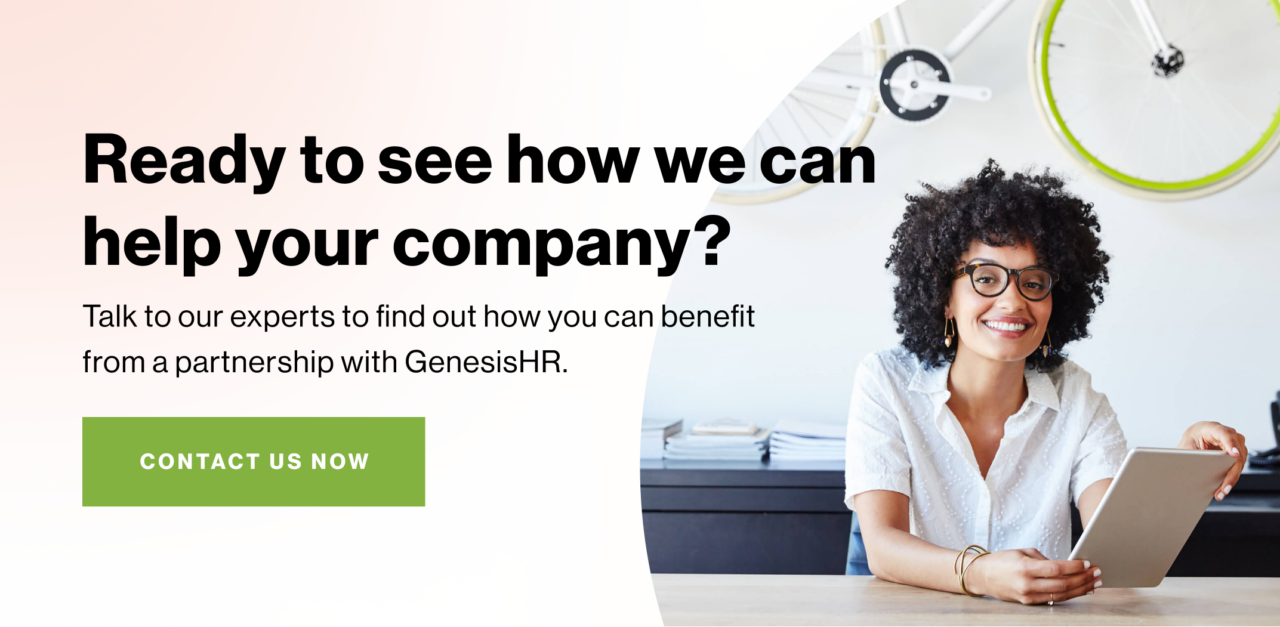 Perhaps it makes sense to start this article with a disclaimer first.
Perhaps it makes sense to start this article with a disclaimer first.
Yes, I founded Genesis HR Solutions, a Professional Employer Organization (PEO), more than 25 years ago. Yes, I am fervent apostle of the PEO concept. So if what follows sounds a bit slanted, I plead guilty as charged—but I hope you’ll check this article out and see why I—and so many others—believe in the concept of a PEO.
One of the greatest challenges we face in the PEO industry is to effectively communicate the value offering. The definition provided by the National Association of Professional Employer Organizations (NAPEO) is as follows:
“A professional employer organization (PEO) provides comprehensive HR solutions for small and mid-size businesses. Payroll, benefits, HR, tax administration, and regulatory compliance assistance are some of the many services PEOs provide to growing businesses across the country. Small businesses that work with a PEO grow 7 to 9 percent faster, have employee turnover that is 10 to 14 percent lower, and are 50 percent less likely to go out of business.”
What I have found over the years that while the definition is certainly true, it often times creates more questions from business owners. However, once the essence of co-employment is understood, the value proposition becomes clear. When a PEO partners with a client, a new dimension is brought to the notion of employer rights, risks, and responsibilities, since the PEO is clearly an employer in the relationship. In some jurisdictions, the PEO is referred to as the “general employer,” while the client company is named the “special employer.” And yes, though each state treats the PEO-client relationship according to its own laws and regulations, the notion of two employers partnering in a co-employment relationship becomes the cornerstone of the PEO model.
Every company has a product or service, and human resources (HR) is something that is always needed, whether it’s provided from within or managed with external help. In a PEO, HR is the product and the service. It is the only industry whose employers take on this role while sharing considerable employer responsibilities with the clients they serve.
The Zenefits Example
In 2013, health insurance brokers and the PEO industry saw a challenge emerge when Zenefits, a California-based software company, introduced an offering that was pretty easy to understand—buy your insurance from them, and they will provide the software you need the take care of your HR needs. An easy elevator pitch it would seem. Investors certainly thought so. At one point in its short history, Zenefits was valued at $4.5 billion. But, over the past several months, the company has experienced a series of setbacks that has created a public persona no CEO would want happening on their watch. William Alden shares the details in his article, How Zenefits Crashed Back Down To Earth.
Have the wheels come off the wagon for Zenefits? Possibly, but not likely. The concept has seemed to catch on, and others have come forward to compete with Zenefits by emulating its service offering. Could this be too much of a good thing? I think so. Here’s why.
PEO Vs. Cloud-based Software: An Analysis
Zenefits and companies like it that are new to the “software-for-insurance commission” industry takes the “human” out of “human resources.” If that sounds like an oxymoron, it is. Human resource management is not something that can be largely replaced by software. And, while it is certainly true that a robust Human Resource Information System (HRIS) is critical, it is not the end-all.
When software fails and tax payments are not remitted on time or in compliance with the Affordable Care Act (ACA), who are the regulators looking to? At the end of the day, it’s clients who are victimized. It’s certainly not companies like Zenefits. Insurance regulators in several states have their hands full with these companies for other reasons.
For employers who want help managing employee relations issues, preventing and handling workplace injuries, providing a robust employee benefit package, and making compliance a cornerstone of the offering, the only choice is finding an HR partner in a PEO.
My advice to those who consider the alternative to a PEO? I would say, “let the buyer beware.”




